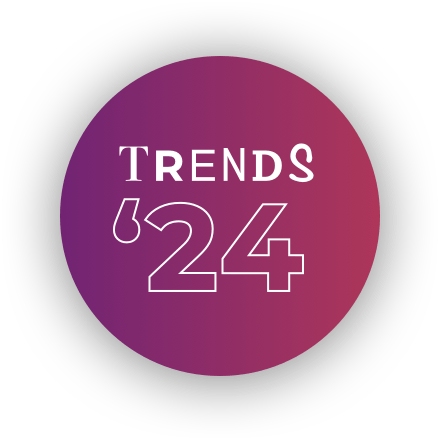
BECKY LEONARD,
INSIGHT & CONTENT MANAGER
Timeto getpersonal
When you think of personalisation and targeting, do you think of huge mounds of data input, algorithms that seem to know you better than you know yourself, and tailored digital platforms?
If so, you’re not wrong. But when it comes to internal communication, we have to think beyond the digital experience. How do we give employees a relevant and personal offering across every channel – whether it’s a town hall meeting or a poster?

Step 1:
Know your limits
The first step in personalising your communications is getting personal about your audience. And by that we mean understanding who you’re engaging, and segmenting them into smaller, defined groups with shared characteristics.
You may be familiar with the basics, such as defining groups by the likes of seniority (for example, line manager vs direct report), type of role (finance versus manufacturing), working hours (shift vs standard business hours) or work location (factory vs office).
Paul Jones, our Head of Insight, explains that it’s then important to streamline these factors down into your core audience groups. “We know that one-size-doesn’t-fit-all, but at the same time we can’t give everyone a perfectly tailored offering when it comes to internal communications. We simply don’t have the resources.
“Instead, you should be realistic and think about four or five key groups that would each benefit from targeted and tailored information.”
However, these audience groups don’t need to be – and shouldn’t be – set in stone. Depending on your organisation, you might also have some cultural characteristics or timely issues you want to think about too. Have you recently had a large influx of new starters? Or has your recent survey revealed a particularly disenfranchised group? Think about diversity here too – not just in terms of how you share information, but how you give people opportunities to get involved or give their feedback as well.
Over to you
We asked you to consider how personal your communications are by asking how well you know your audience.
Overto you
We asked you to consider how personal your communications are by asking how well you know your audience.
Step 2:
Do it more, more often
We find that organisations often only think about differences between their audiences when they’re dealing with a large-scale, multi-faceted communication campaign. But you need to be thinking about how you can personalise and target your regular, business-as-usual communications too.
It can be as simple as making sure people have a choice. When we run audits, we find that we’ll have a chunk of people who say they get too much information from IC, and some who get too little. The solution is giving them the option to consume information in a way that suits them.
For example, sending a newsletter round-up that has a short summary and a link to the full content. People can personalise their communication experience by choosing if they’re happy with the ‘in a nutshell’ version, or whether they want the full detail.
When running a question and answer session with a leader, provide an ‘Anything else?’ option after the event (such as an online form or suggestion box) for people who needed more time to think or didn’t want to ask a question in a public forum. Then round up the responses and share.
If you’re launching new company values, back up your introductory booklet with an explainer video, so people can choose how they learn about them.
Or if you’re launching new digital tools, you could create a ‘top tips’ one-page document so that everyone knows the basics; but then provide a more detailed guide for those who want to really get into the weeds.
These things may seem simple, but they go a long way in creating a diverse communication experience that people can mould to suit their needs.
Step 3:
Watch your mouth
And it’s not just about content type and channel. It’s also about the language and tone we use too. Think about creating communications for a health and safety campaign. Your language is going to be very different for someone working in a more hazardous manufacturing environment than it is for someone working from home or in an office.
Or going back to that values launch example, you’ll need to pitch it differently to a leadership group who may have been closer to its inception, than frontline workers who you need to help connect to their purpose.
We’re fans of piloting your communications with representatives from different groups. Ask people to review your communications and feed back what feels relevant to them, and what doesn’t feel quite right. Then tweak each version as necessary.
Step 4:
Bring in help
We’ve already touched on our belief that personalisation and targeting isn’t just about clever machine learning (although we do think it’s really cool, and we’ll be looking at that in a later chapter). A big part of it is about making messages relevant to the people who are receiving them.
It’s the personal touch. Going into your hairdressers and being greeted by name. Your local café remembering your regular order. The best way to replicate that in internal communication? Use line managers.
Line managers know their teams the best; that’s why we must equip them with the skills and tools to be effective communicators. If done right, they can personalise communications on an individual and/or team level, and help to make messages relevant to their everyday experience.

If you
only do
one thing
Have a chat with your colleagues in HR to find out if they have any data that could help you create a handful of audience groups. If not, run a workshop to create some audience profiles.
Not sure where to start? Our Insight team can help you to plan and facilitate – contact paul.jones@sequelgroup.co.uk to find out more.

